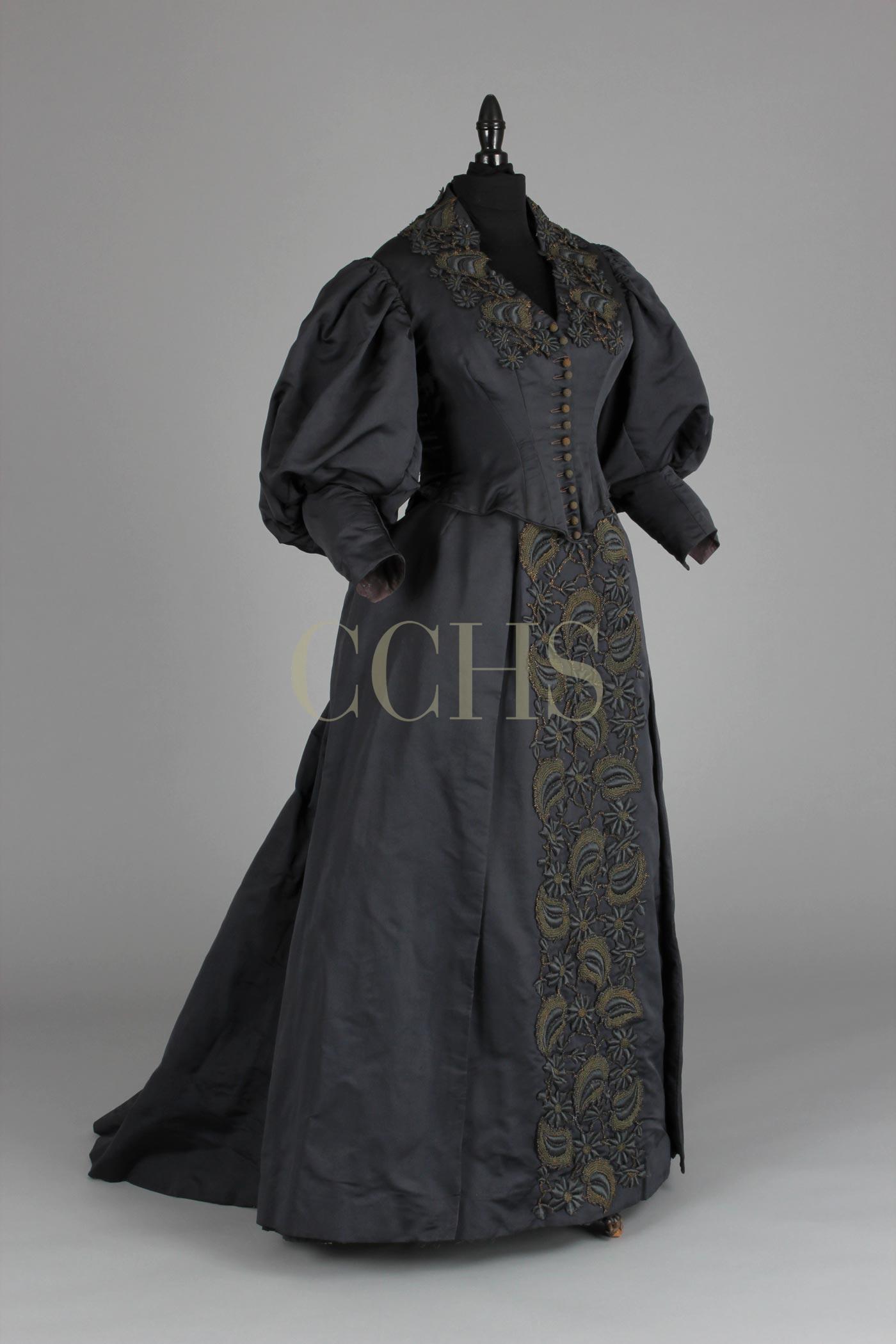
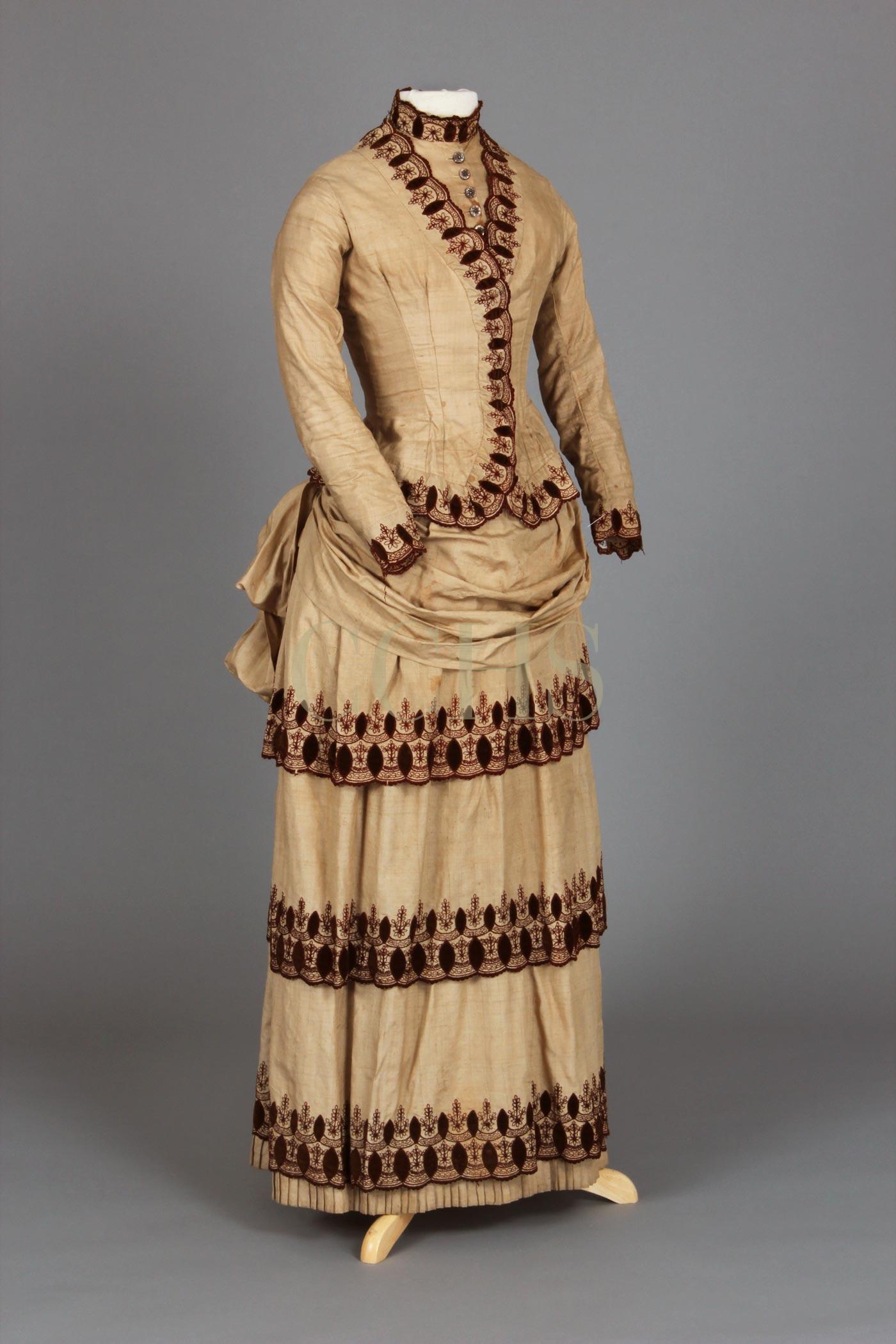
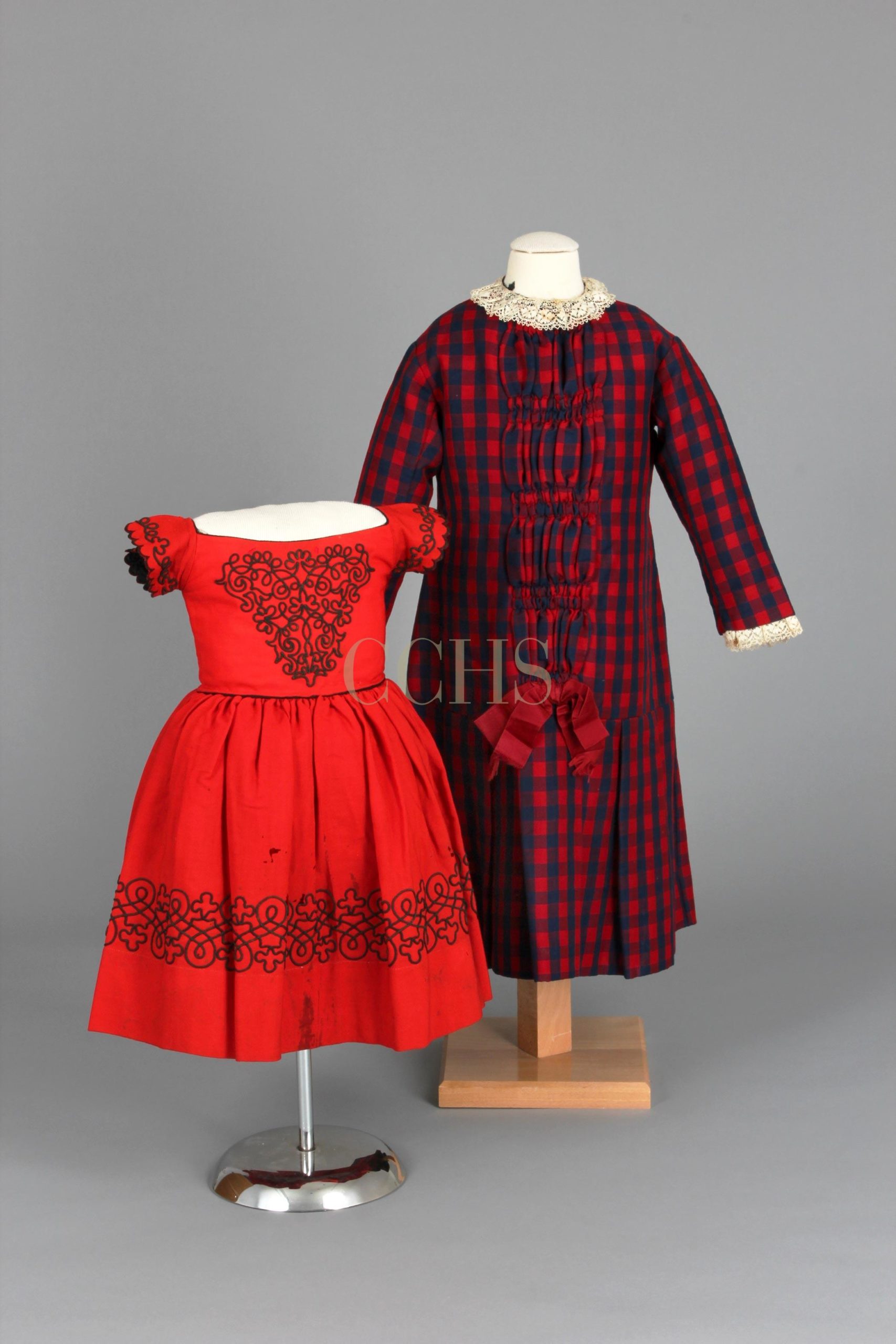
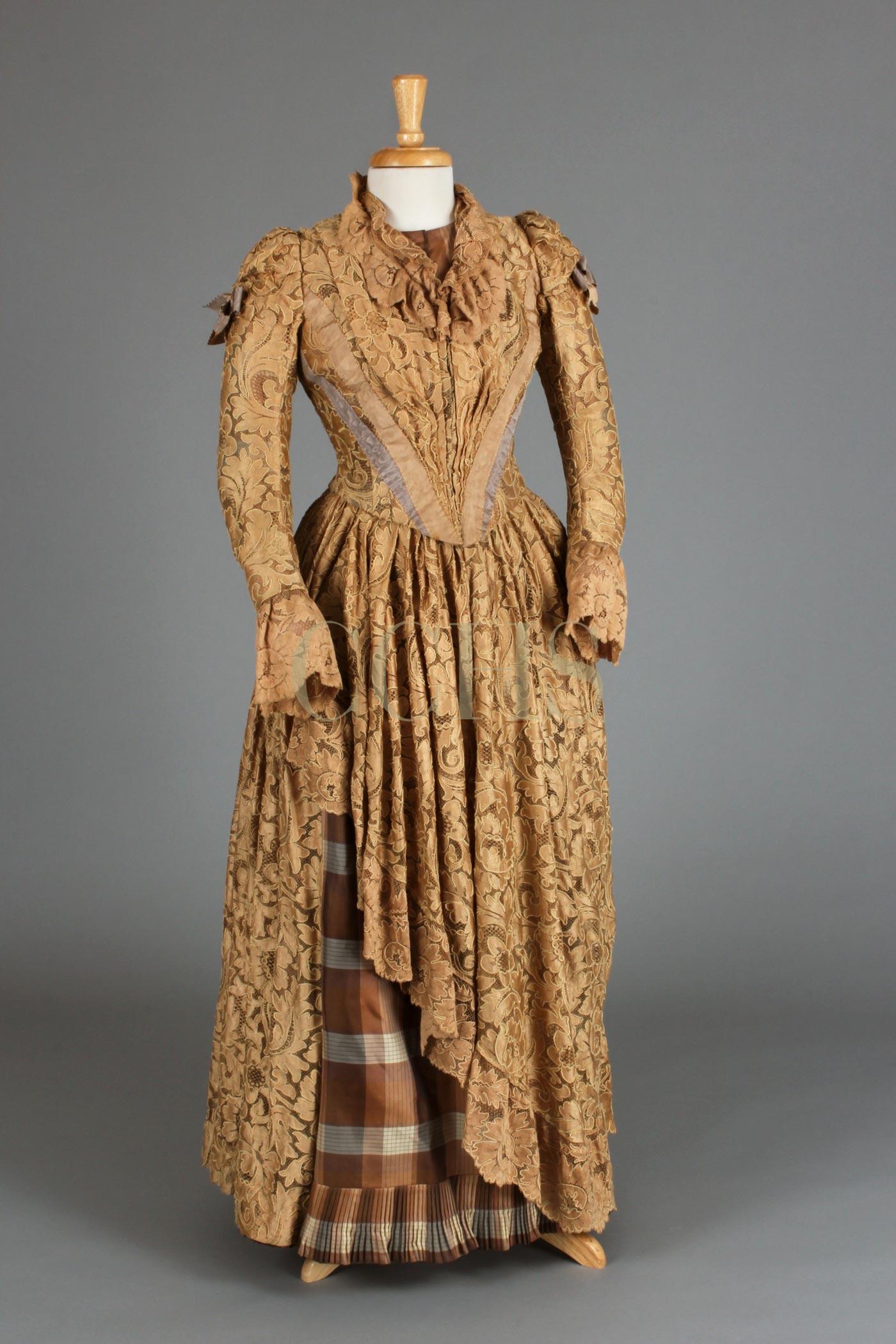
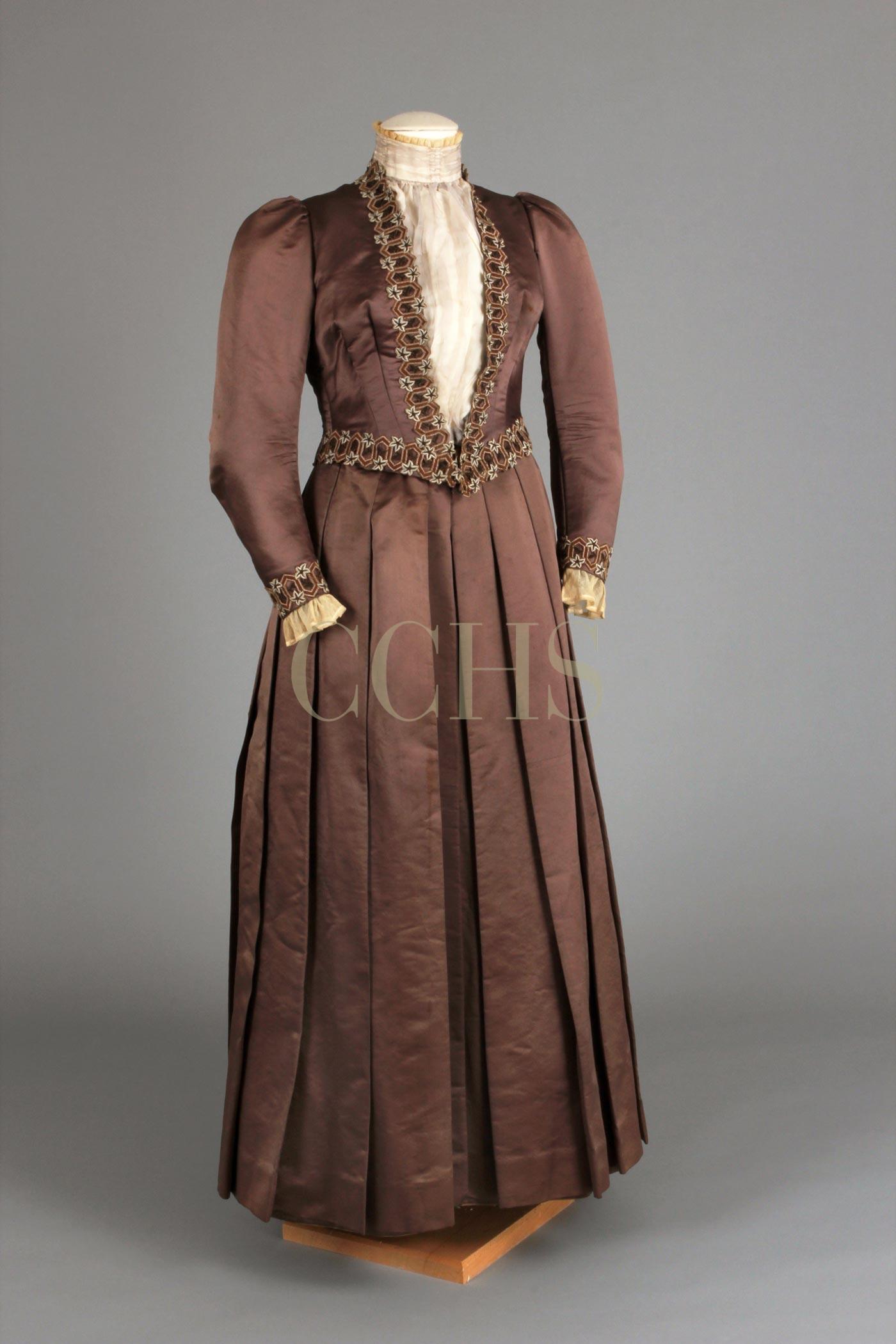
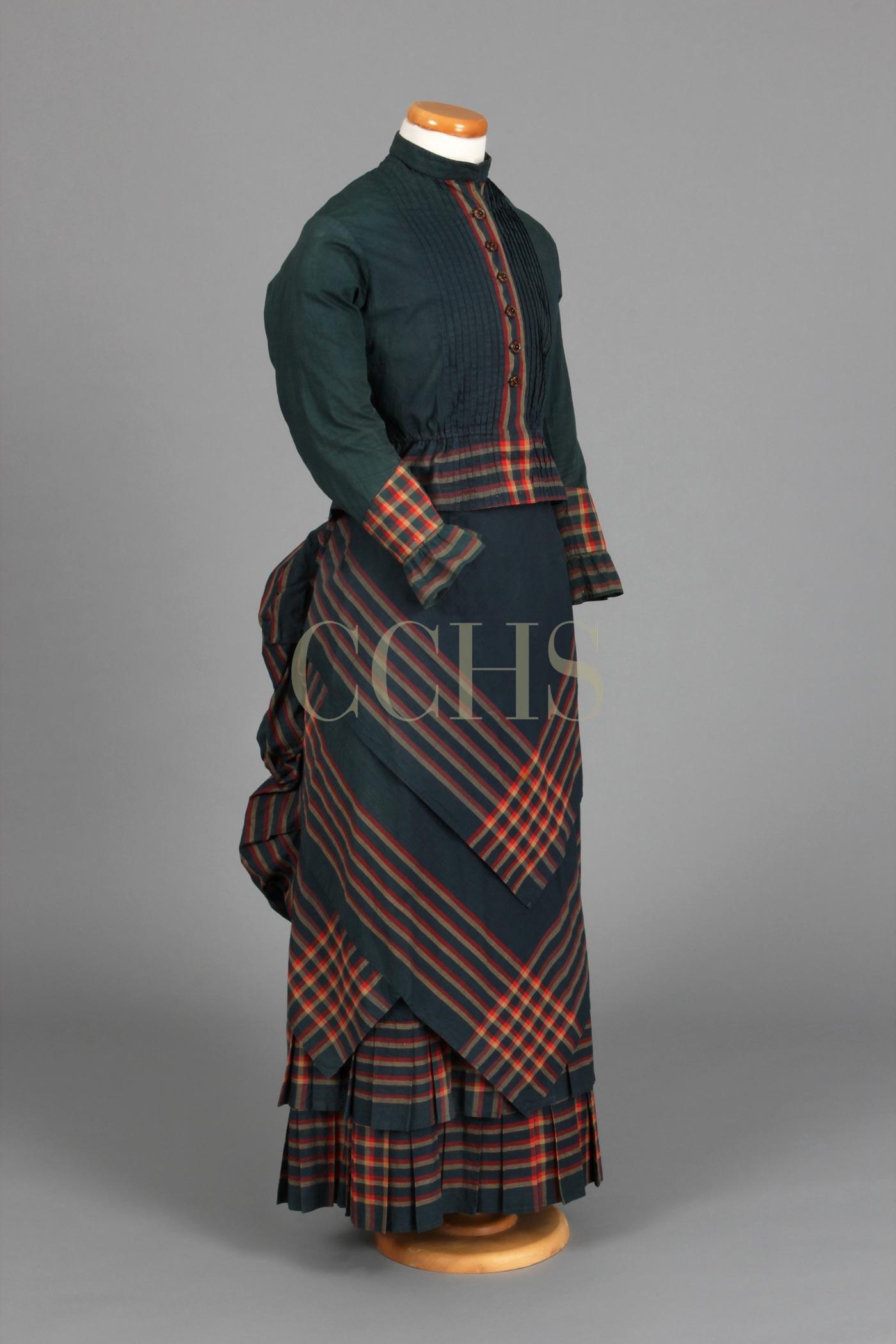
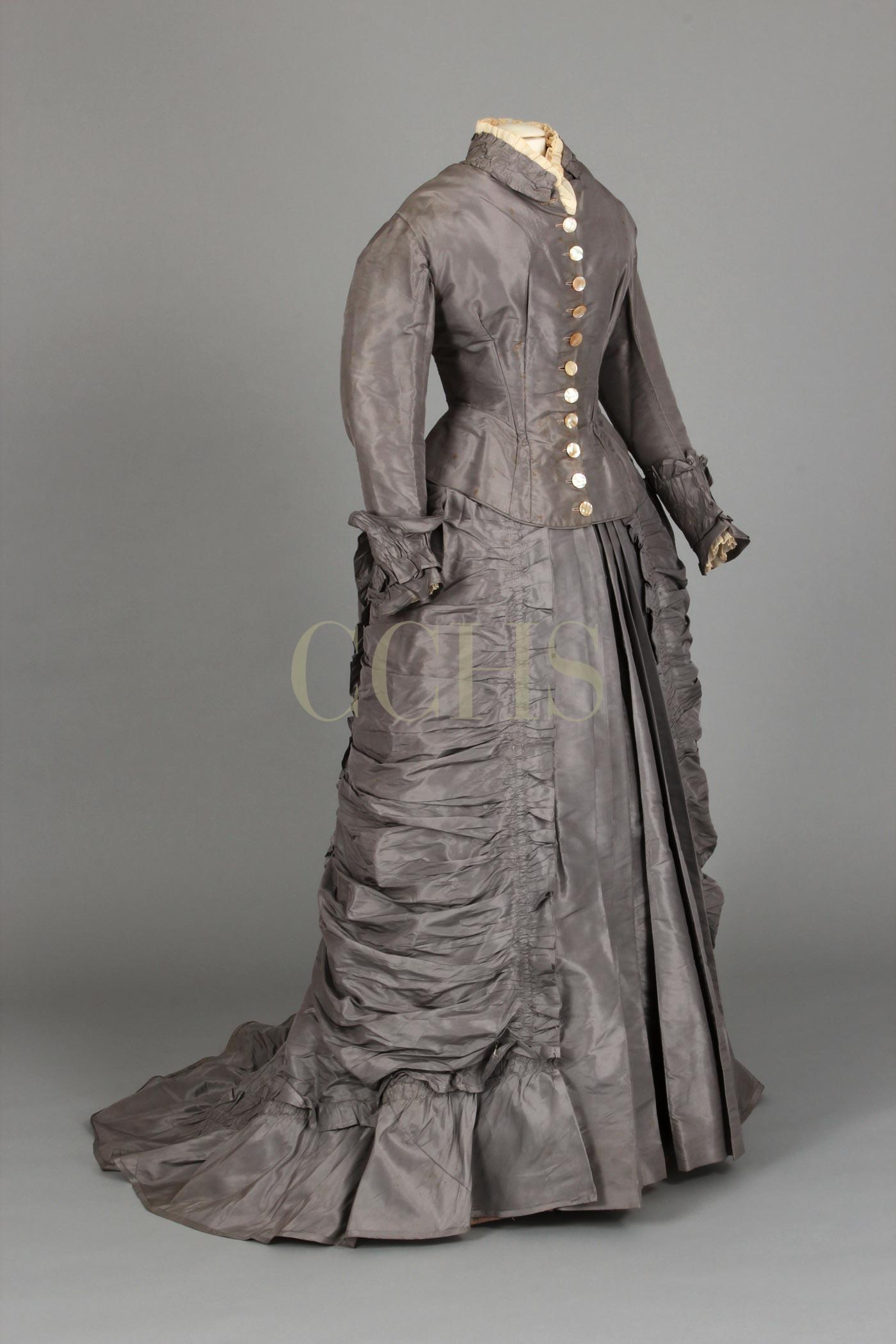
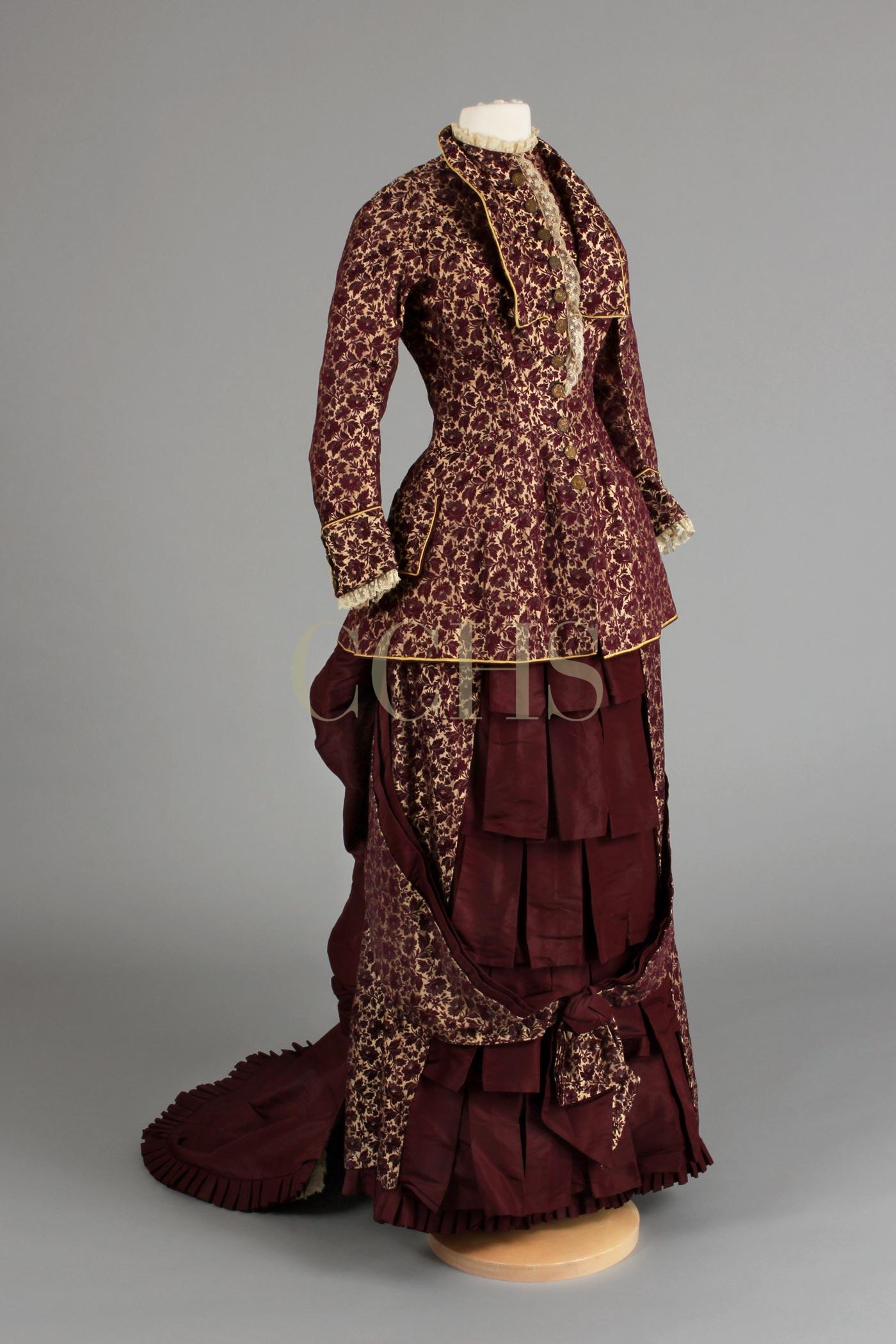
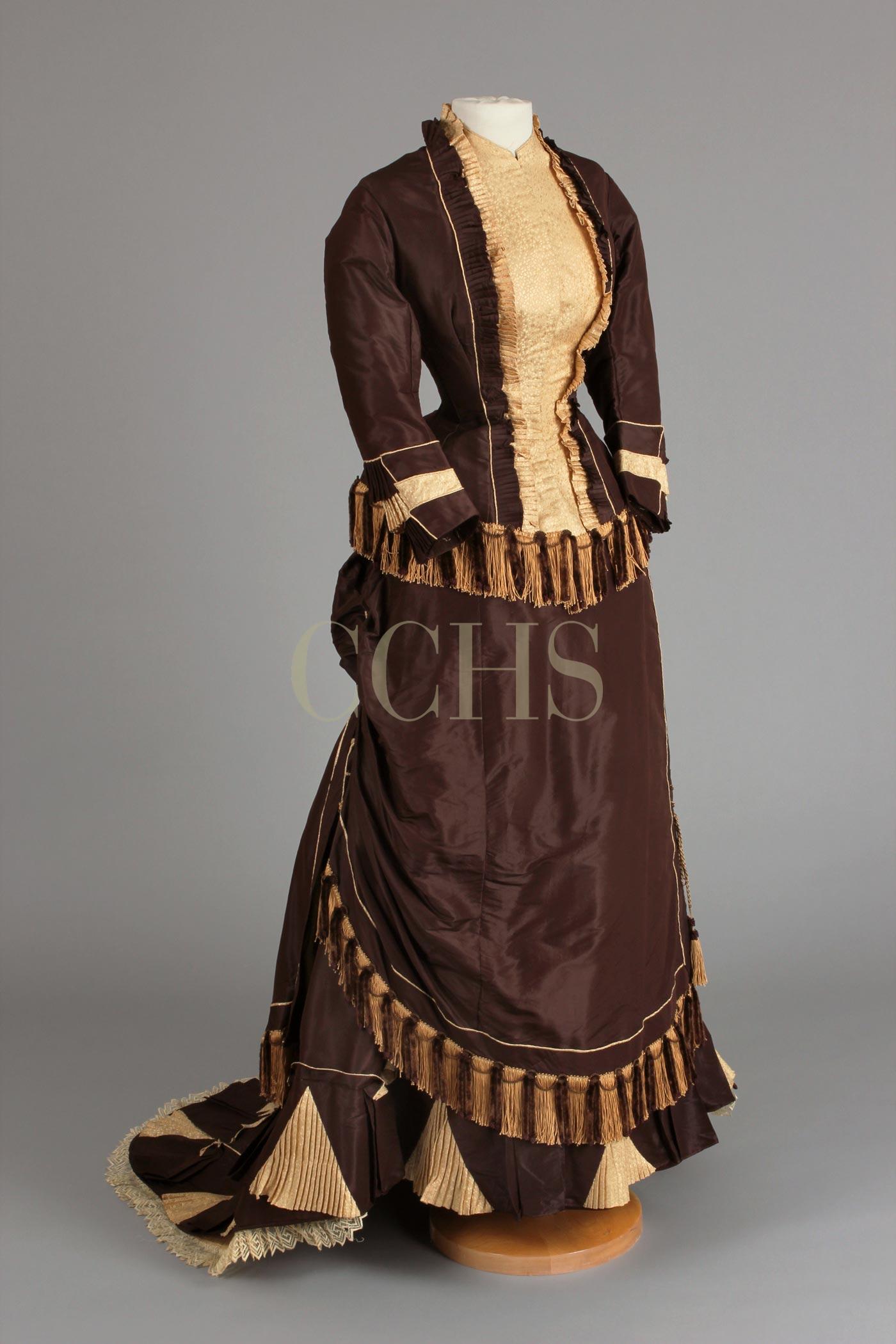
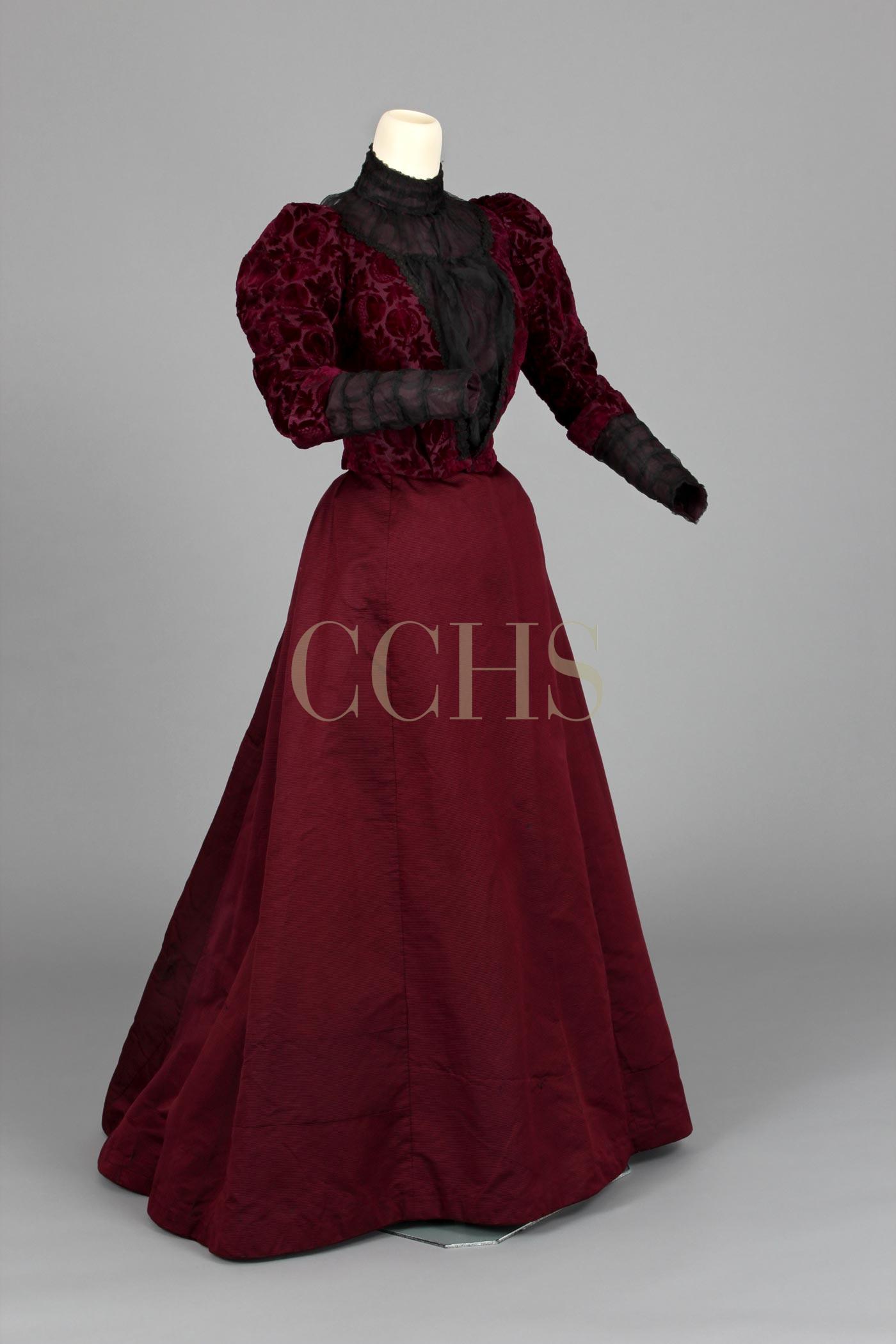
Women who could afford high fashion still relied on customized dresses that were one last flourish of over-the-top design and had decorations such as pleats, embroidery and machine-made trim. However, department stores began to replace dressmakers and home sewing for the local middle class with simpler profiles. Undergarments, still worn by women in many layers, became cheaper to buy at stores. Men’s clothing, simple in shape, was increasingly available as ready-made. Even distinctive Quaker plain dress began to disappear.
Stores were easier to reach by trains and trolleys. Mass transportation also changed how people in Chester County could make their living. The population began a slow shift from an agricultural focus to other businesses and professions. Educational and recreational opportunities led to lifestyles that, for some, included loose-fitting sports clothing and simplified business dress. The world of handmade clothing was quickly disappearing.
Handmade and ready-made clothing were both available to most economic classes. By the 1890s, a trolley ride took consumers to Philadelphia department stores or on shorter trips to local dry goods stores all over the county. In 1888, Sears, Roebuck and Company published its first mail order catalog. Consumers could shop for men’s suits, shirts, women’s blouses, children’s clothing, undergarments and fabric for home sewing without leaving home.
Undergarments had become the most widely mass produced clothing. Loose cotton and form-fitting wool undergarments were available for women, men and children. Women still wore petticoats and drawers in several layers but the corset began to change shape. In the late 1870s, Drs. Lucien C. Warner and I. De Ver Warner introduced their health corset (Bridgeport, CT). It was intended to create the hour-glass body shape without compressing internal organs.
Despite the growing preference for ready-made clothing, dressmakers, clothiers and tailors were still numerous in Chester County in the 1890s. Boyd’s Business Directories list them in Coatesville, Phoenixville, West Chester, Oxford, Kennett Square, Honey Brook and other local boroughs. Sewing machines also remained popular items at home.
Women’s ready-made clothing was becoming more available. The new immigrants to cities on the East Coast provided inexpensive labor to make it. Although numerous local tailors and dressmakers were kept in business by a growing Chester County population, clothing no longer had the rarity it had at the beginning of the century. By the late 1800s clothing was not mentioned at all in probate inventories.
225 N. High Street, West Chester, PA 19380 | 610-692-4800
Sign up for our Newsletter